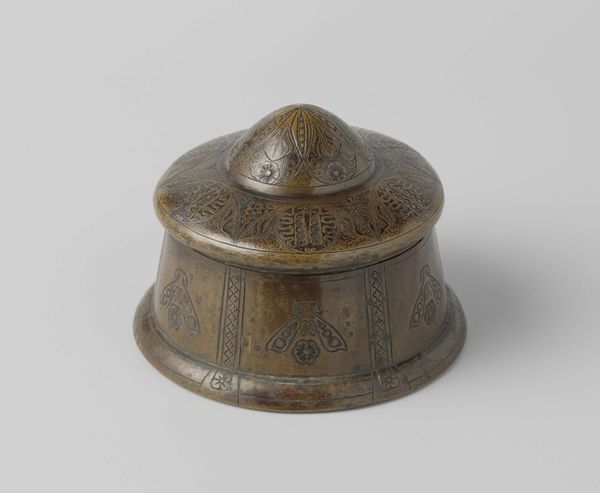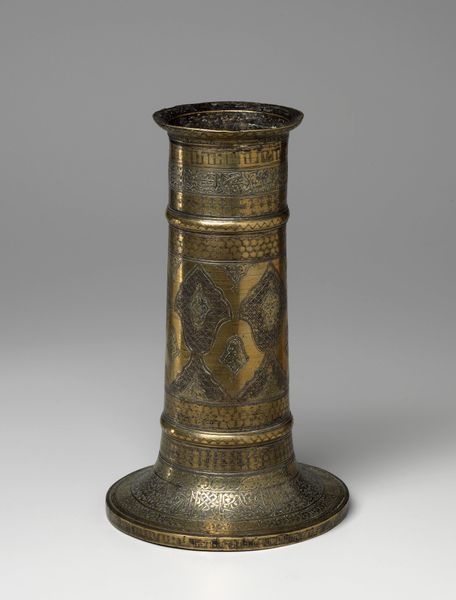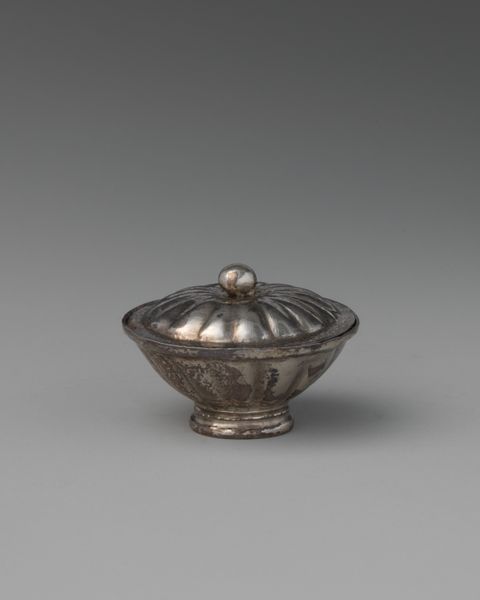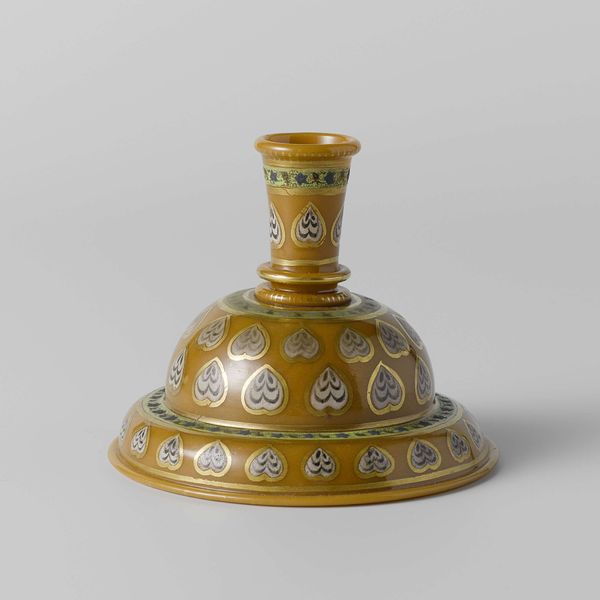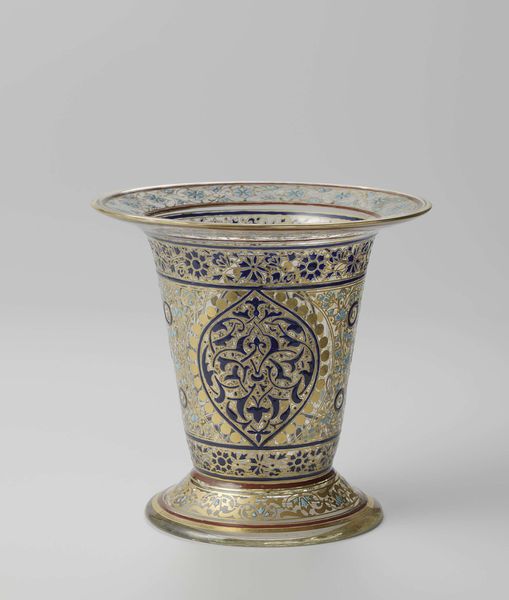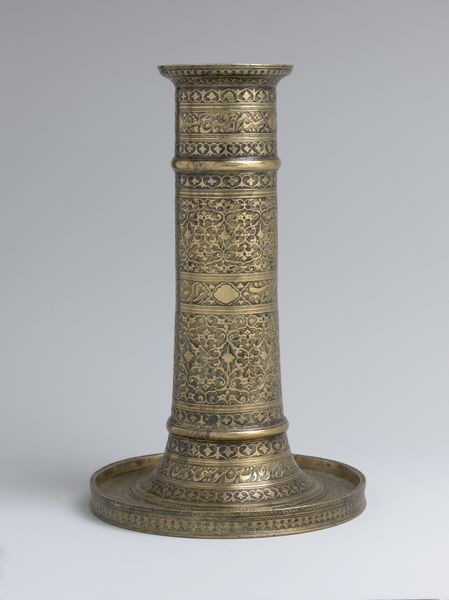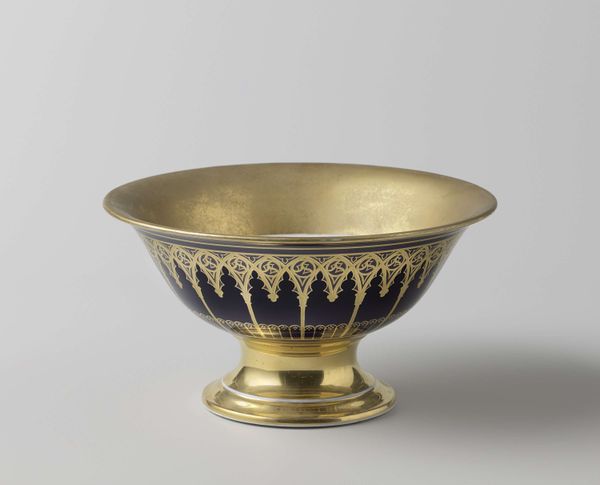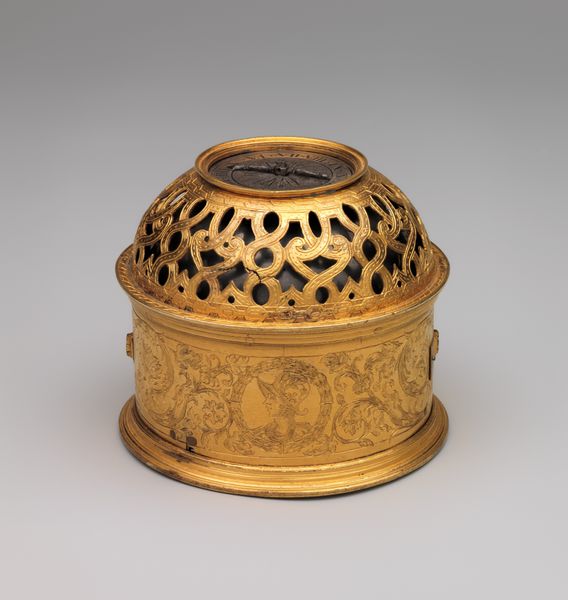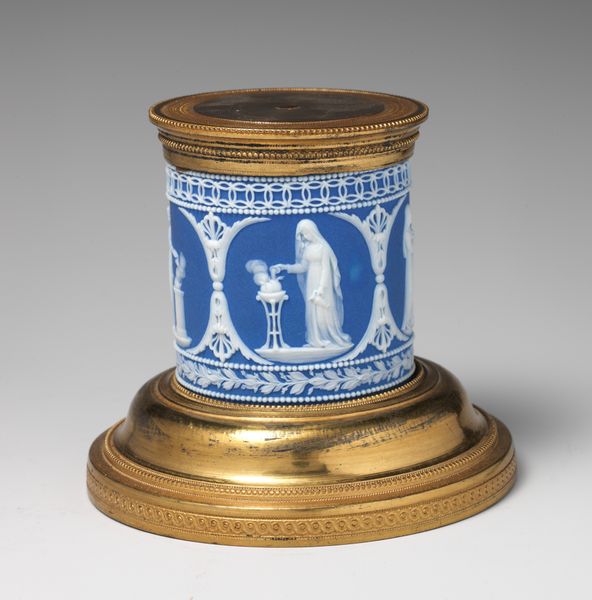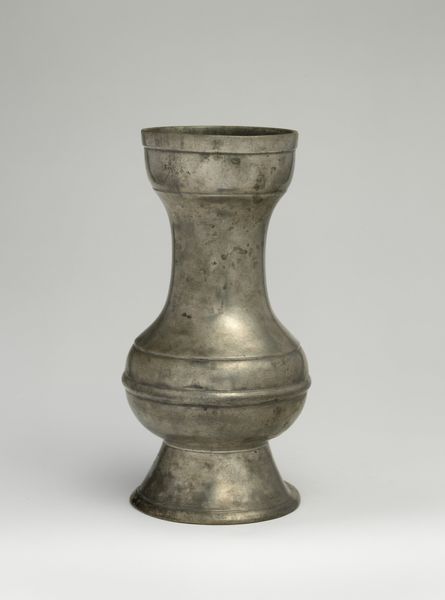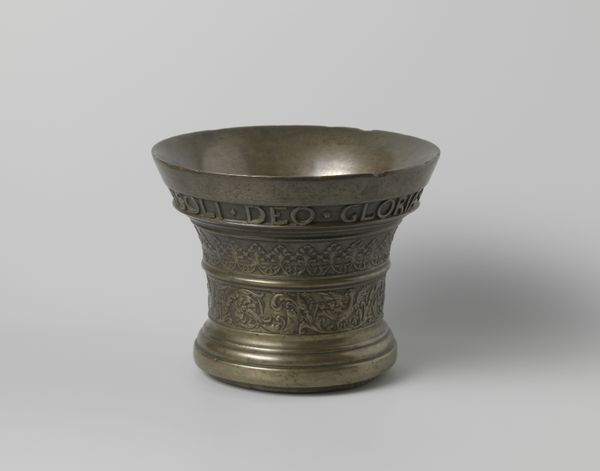
ceramic
#
ceramic
#
mannerism
#
figuration
#
11_renaissance
#
ceramic
#
miniature
Dimensions: height 9.0 cm, diameter 14.0 cm, diameter 14.0 cm
Copyright: Rijks Museum: Open Domain
This salt cellar, standing at just 9 cm tall, was crafted in France by Jean Limosin sometime between 1615 and 1635. It is made of painted enamel. Salt cellars like this weren't just functional objects; they were symbols of wealth and status displayed prominently on dining tables. The depiction of gods and goddesses elevates a mundane object to a conversation piece, reflecting the cultural fascination with classical antiquity during the Renaissance. The detailed enamel work speaks to the skill and artistry valued by the French court and aristocracy. Limosin and other Limoges enamelers were patronized by the court and their works can be seen as a reflection of aristocratic taste. To understand this salt cellar fully, we need to look at period documents, such as inventories of aristocratic households and records of artistic patronage, to understand the social and cultural context in which it was created and consumed.
Comments
rijksmuseum about 2 years ago
⋮
Figures are depicted in various colours on a black ground with golden decorations. They represent gods and goddesses, including several Muses, and are taken from prints by the French engraver Etienne Delaune.
Join the conversation
Join millions of artists and users on Artera today and experience the ultimate creative platform.

